Pongal, one of the most revered and celebrated harvest festivals in Tamil Nadu, is a vibrant tapestry of traditions, rituals, and heartfelt gratitude. Spanning four days in mid-January, Pongal marks the beginning of the Tamil month of Thai, a time of prosperity and joy. Derived from the Tamil word “pongu” meaning “to boil over” or “to overflow,” the festival signifies abundance and the overflowing of gratitude toward nature’s bounty. Let’s delve into the rich customs, rituals, and cultural significance of this cherished festival.
The Significance of Pongal
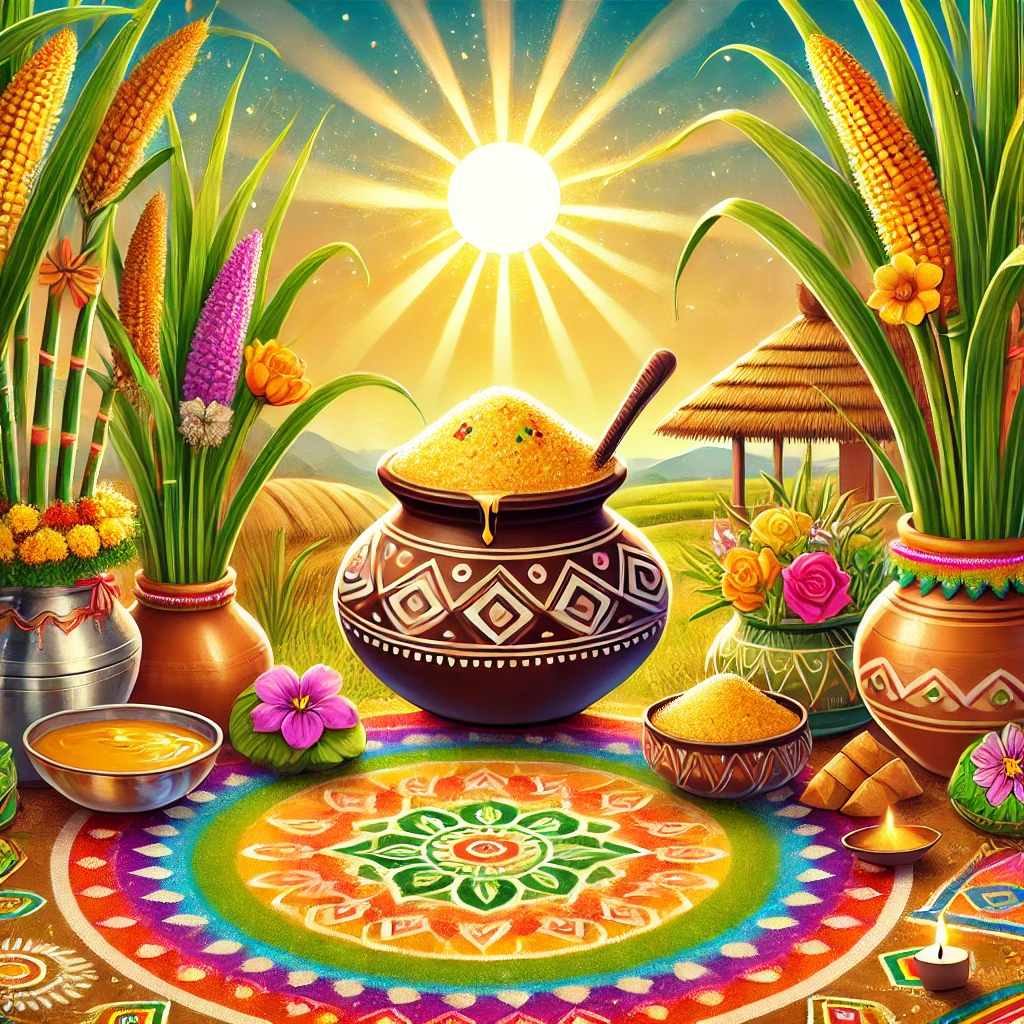
Pongal is a thanksgiving festival dedicated to the Sun God, farmers, and cattle that play a vital role in agriculture. Tamil Nadu’s agrarian roots are deeply intertwined with the festival, as it marks the end of the harvest season and the beginning of a new agricultural cycle. The festival also symbolizes harmony between humans and nature, a sentiment beautifully reflected in its rituals and celebrations.
Pongal’s timing coincides with the winter solstice, heralding longer days and the retreat of winter. It is celebrated not only in Tamil Nadu but also in other parts of India, where it is known by different names, such as Makar Sankranti in the north, Lohri in Punjab, and Bihu in Assam.
The Four Days of Pongal Celebrations
1. Bhogi Pongal: Cleansing and Renewal
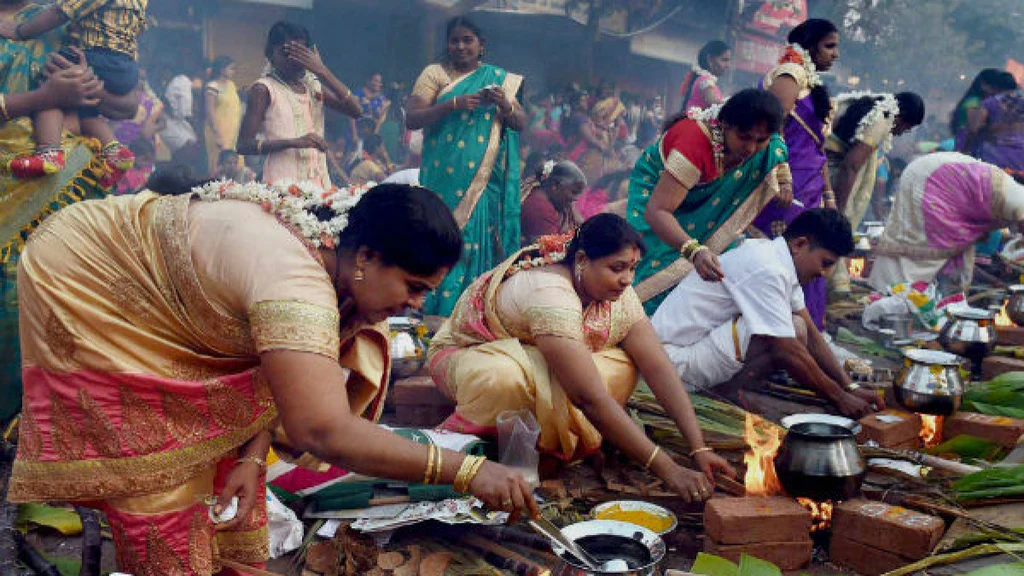
The first day of Pongal, Bhogi, is dedicated to Lord Indra, the God of Rain. It is a day of cleansing and renewal, where people discard old belongings and clutter, symbolizing a fresh start. Homes are cleaned and adorned with colorful “kolams” (rangoli) made from rice flour and vibrant powders, welcoming prosperity and positivity.
A prominent ritual of Bhogi Pongal is the Bhogi Mantalu, a bonfire where unwanted items are burned. This act signifies the destruction of old, negative influences and the invitation of new, positive energy. Families gather around the fire, chanting prayers and celebrating the new dawn.
2. Thai Pongal: The Main Festival Day
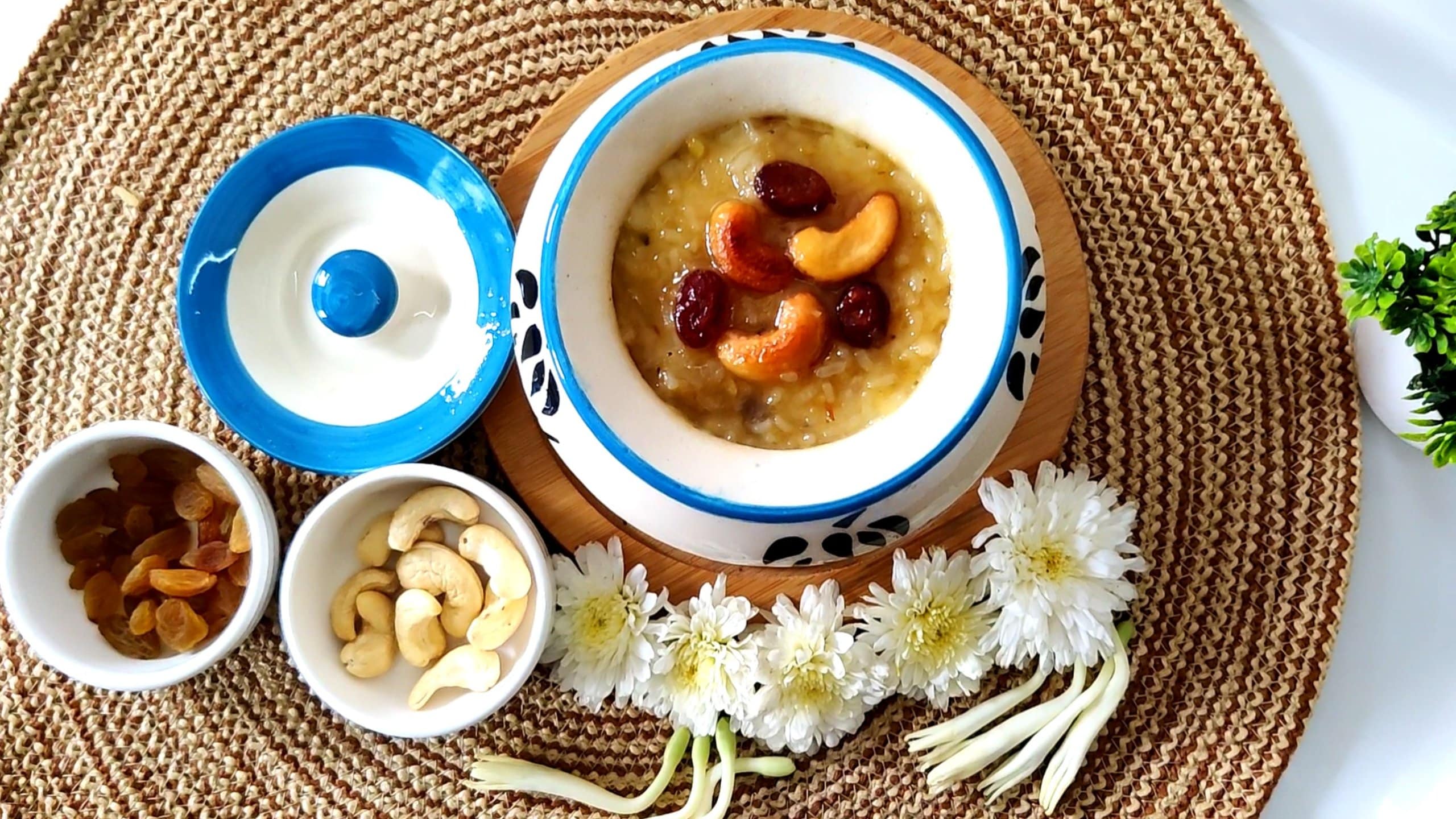
The second day, Thai Pongal, is the most significant. Dedicated to the Sun God, Surya, this day is marked by cooking a special dish called “Pongal,” a sweet rice dish prepared with freshly harvested rice, jaggery, and milk. Traditionally cooked in a clay pot, the dish is allowed to boil over as an auspicious sign of abundance and prosperity.
The preparation of Pongal is a communal event, with families gathering to cook in the open, often in their courtyards. The cooking area is decorated with turmeric plants, sugarcane, and fresh flowers, adding to the festive ambiance. As the Pongal boils over, people shout “Pongalo Pongal!” as a mark of joy and gratitude.
Thai Pongal is also a day of prayers and offerings to the Sun God. Devotees place the Pongal dish on a banana leaf along with other offerings, such as sugarcane, coconut, and bananas, as they pray for health, wealth, and happiness.
3. Mattu Pongal: Honoring Cattle

The third day, Mattu Pongal, is dedicated to cattle, the backbone of agricultural practices. Farmers decorate their cows and bulls with garlands, bells, and colorful paints. The animals are bathed, worshipped, and given a feast as a token of gratitude for their hard work in the fields.
One of the highlights of Mattu Pongal is the “Jallikattu” or bull-taming sport, a centuries-old tradition in Tamil Nadu. While it has sparked debates over animal rights, Jallikattu holds cultural significance as a display of bravery and skill.
4. Kaanum Pongal: Social Bonding
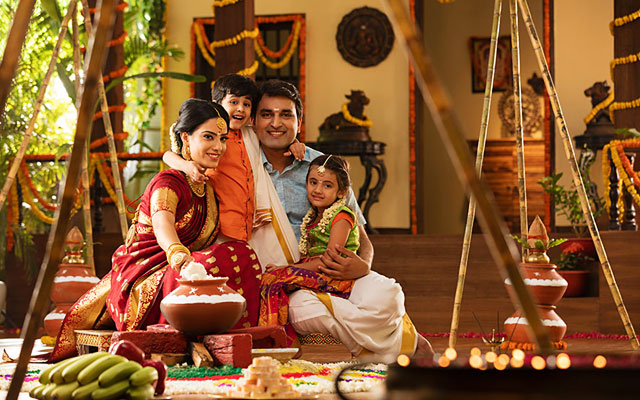
The final day, Kaanum Pongal, is a day for socializing and family reunions. “Kaanum” translates to “to visit,” and on this day, families visit relatives, friends, and neighbors to exchange greetings and gifts. It is a time for feasting and forging stronger bonds within the community.
Special dishes like “ven pongal” (savory Pongal) and other traditional Tamil delicacies are prepared and shared. People also visit temples and offer prayers for their loved ones’ well-being.
Customs and Rituals of Pongal
1. Kolam Art
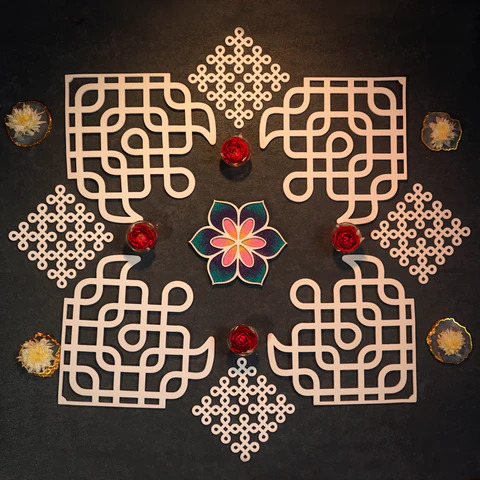
Kolams are intricate designs made with rice flour at the entrance of homes. These patterns are not only decorative but also symbolic of welcoming Lakshmi, the Goddess of Wealth, and warding off evil spirits. The practice of creating kolams is a cherished tradition passed down through generations.
2. Cooking in Clay Pots
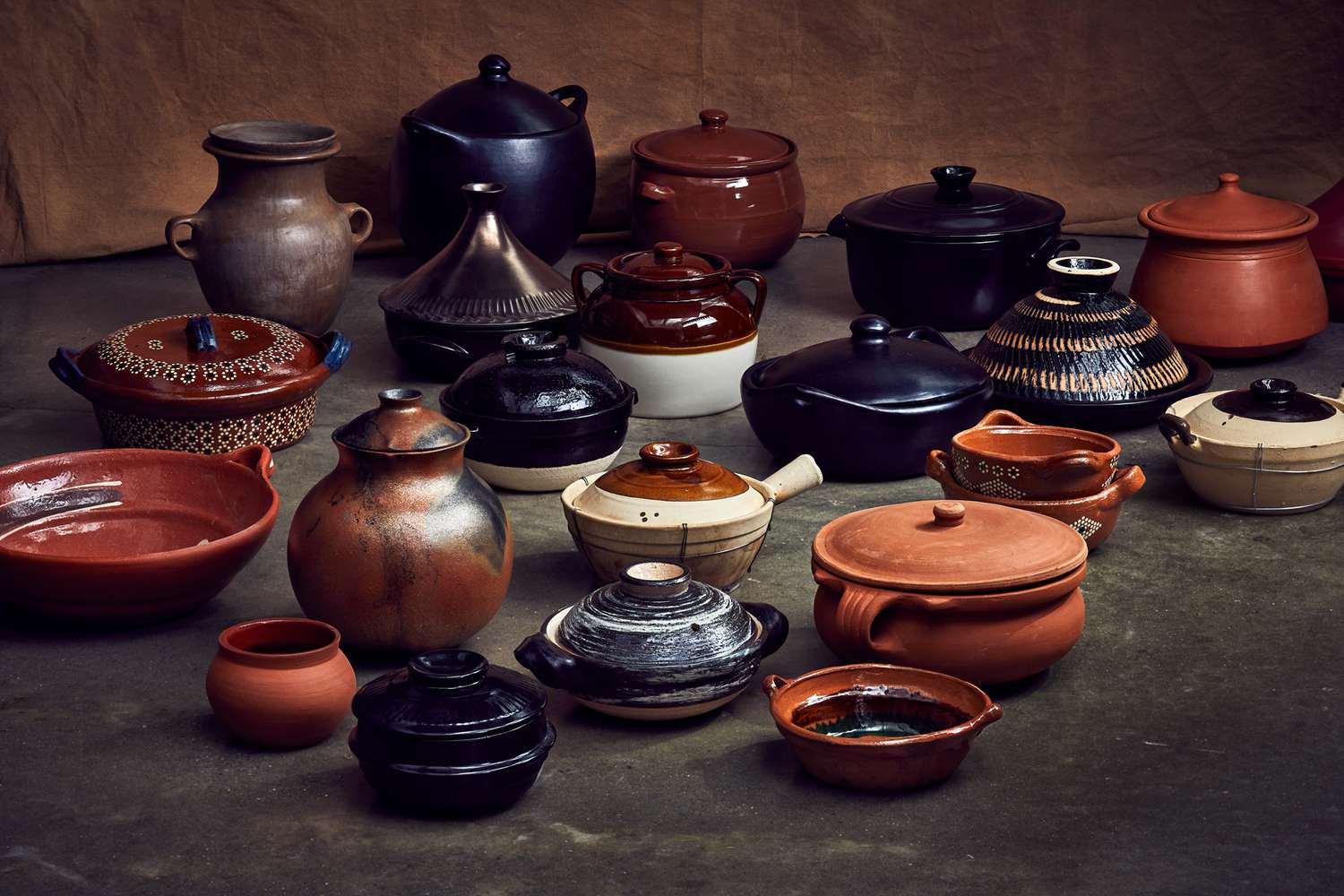
Cooking Pongal in traditional clay pots is an essential ritual. The pots are often adorned with turmeric and ginger plants and are placed over wood-fired stoves. The act of letting the Pongal boil over represents the overflowing of prosperity.
3. Worship of the Sun God

Worshiping the Sun God with offerings and prayers is a central part of the festival. Devotees express gratitude for the sunlight that sustains life and ensures bountiful harvests.
4. Decorating Cattle
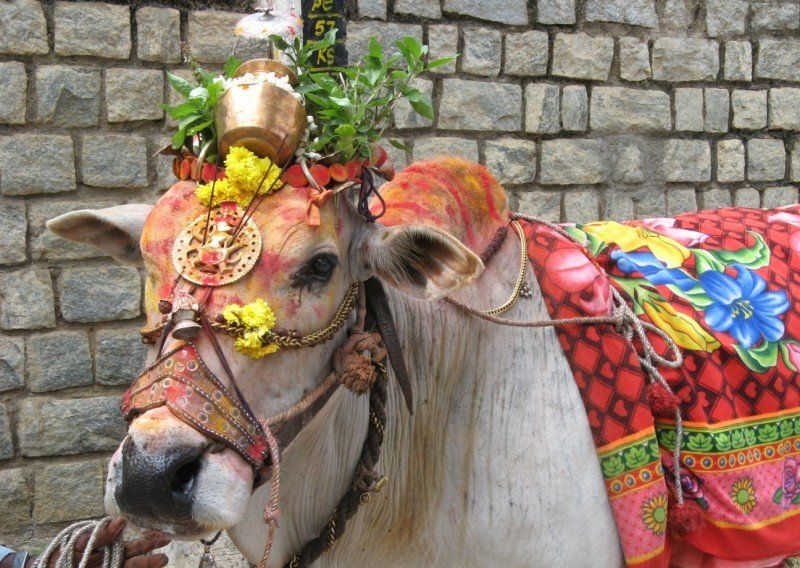
On Mattu Pongal, decorating cattle with vibrant colors, beads, and bells is a heartfelt way of acknowledging their contribution to agriculture. This day highlights the harmonious coexistence of humans and animals.
5. Sharing and Community Feasts
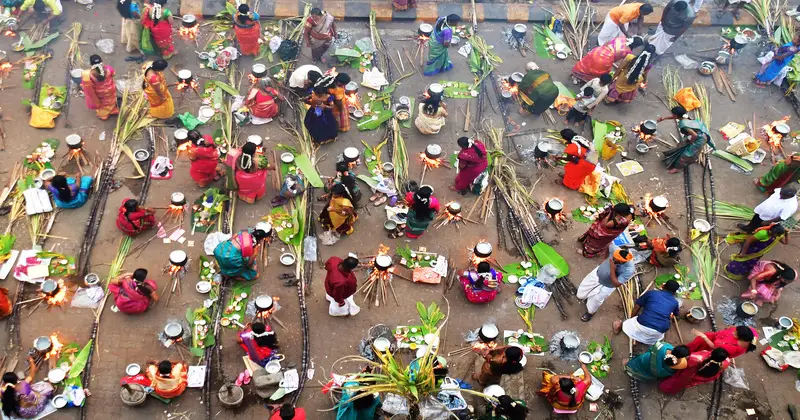
Pongal is a festival of sharing. Families, friends, and neighbors come together to share meals, exchange gifts, and celebrate unity. Community feasts are a common sight, emphasizing the spirit of togetherness.
Regional Variations and Similarities
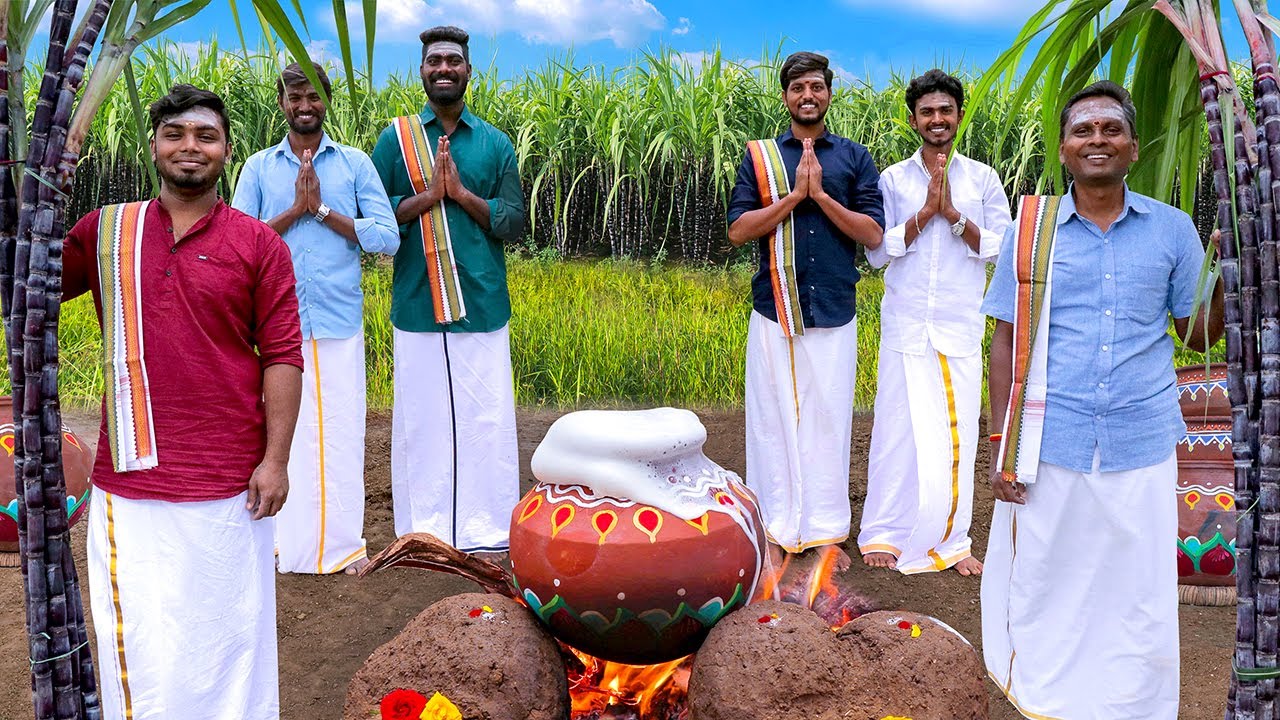
While Pongal is quintessentially Tamil, similar harvest festivals are celebrated across India with regional variations. For instance, Makar Sankranti in the northern states involves kite flying, while Bihu in Assam features traditional music and dance. Despite these variations, the underlying theme of gratitude and celebration of nature’s bounty remains universal.
The Cultural Impact of Pongal
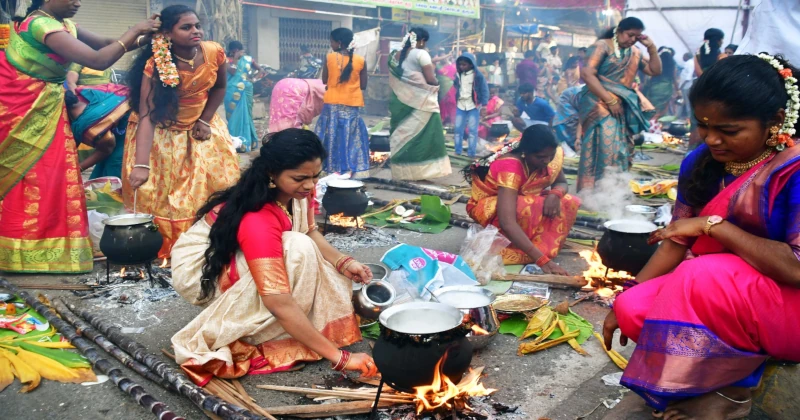
Pongal is not just a festival; it is a cultural phenomenon that reflects Tamil Nadu’s rich heritage and values. It fosters a sense of identity and pride among Tamils worldwide. The festival’s customs, rituals, and celebrations offer a glimpse into the region’s agrarian lifestyle and its deep connection to nature.
Moreover, Pongal promotes sustainable living and harmony with the environment. The use of natural materials like clay, rice flour, and turmeric in rituals underscores the importance of eco-friendly practices.
Celebrating Pongal Today
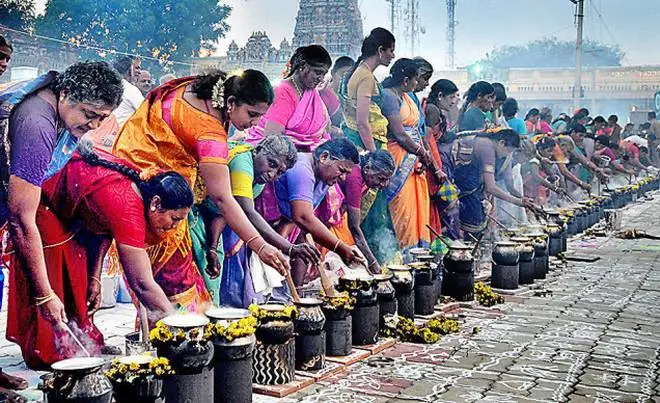
In modern times, while the essence of Pongal remains unchanged, the ways of celebration have evolved. Urban households may not have access to traditional clay pots or wood-fired stoves, but the spirit of gratitude and festivity persists. People now blend traditional practices with contemporary lifestyles, ensuring the festival’s legacy continues.
Social media and technology have also played a role in keeping Pongal traditions alive. From sharing kolam designs to streaming live temple rituals, digital platforms have made it easier for people to connect and celebrate, even from afar.
For A-Z of your event requirements, contact us at Venuelook.com
Conclusion
Pongal is a celebration of life, nature, and community. Its customs and rituals serve as a reminder of the interconnectedness between humans and their environment. As the aroma of sweet Pongal wafts through the air and kolams adorn thresholds, Tamil Nadu comes alive with joy and gratitude.
Whether you’re in the heart of Tamil Nadu or anywhere else in the world, Pongal’s message of abundance and togetherness resonates universally. So this Pongal, let’s embrace its traditions, celebrate its significance, and carry forward its timeless spirit of gratitude and harmony.
FAQs
1. What is the significance of the Pongal dish during the festival? The Pongal dish symbolizes abundance and gratitude. It is made from freshly harvested rice, jaggery, and milk, and its preparation in a clay pot represents the overflowing of prosperity.
2. Why is Mattu Pongal dedicated to cattle? Mattu Pongal honors the invaluable role of cattle in agriculture. Farmers express gratitude by decorating and feeding their cattle, acknowledging their contribution to the harvest.
3. What is the cultural importance of kolam during Pongal? Kolams are intricate designs drawn at the entrance of homes using rice flour. They symbolize welcoming prosperity and warding off negative energies, while also serving as a traditional art form passed down generations.
4. How is Pongal different from other Indian harvest festivals? While Pongal shares similarities with other harvest festivals like Makar Sankranti and Bihu, it uniquely celebrates over four days with specific customs such as cooking Pongal, decorating cattle, and creating kolams.
5. Can Pongal be celebrated in urban settings? Yes, Pongal can be celebrated in urban areas by adapting traditional practices. Families can cook Pongal on modern stoves, draw kolams, and participate in community gatherings to maintain the festive spirit.
For A-Z of your event requirements, contact us at Venuelook.com
You May Also Like:
- Makar Sankranti: An Auspicious Day Celebrated Across Different States of India
- Lohri: A fun-filled music, culture and food festival
- Celebrating the spirit of Lohri
- 7 Things Without Which Lohri is Incomplete!
- Lohri – the Indian Bonfire festival
Have you sent out invitations for your upcoming event? If not, save paper and send free online invitations now.
Looking for a party venue? Browse and book best-suited party venues from VenueLook.com
 Event, Party & Wedding Planning Tips & Ideas for Celebrations Party and Event Planning Tips, Resources and Venues
Event, Party & Wedding Planning Tips & Ideas for Celebrations Party and Event Planning Tips, Resources and Venues










